- We test two more versions of the Ford Lightning, completing our trinity of Lightning range results.
- The 2022 Jaguar I-Pace proves it's actually more efficient than an Audi e-tron, which runs counter to the EPA's projections.
- The 2022 Porsche Taycan GTS hits its numbers but succeeds by the thinnest margins we've seen from Porsche to date.
- The Chevrolet Bolt EUV delivers surprising consistency.
EV Range Test Roundup: How Far Can the Latest EVs Go?
A fresh batch of real-world results for Chevrolet, Ford, Jaguar and more
Hello, EV fans! We have a fresh batch of real-world range results that we're excited to share with you. If you've been following our real-world range tests, you're probably familiar with our typical expanded analysis of each test result. We're not doing that here because almost every vehicle in this roundup is a variant of a vehicle we've already tested. Instead, we'll compare and discuss each of these new results relative to our previous data.
In case you're not aware of our process, Edmunds tests every electric vehicle on the same real-world driving loop to see just how far it can travel from a full charge down to zero miles remaining. If you scroll through our EV range leaderboard, you'll see that most EVs have matched or exceeded their EPA range estimates in our testing. How did this latest crop of new or updated model variants perform? Without further ado, here are the results from our real-world lab.
Latest real-world range results: Same models, new variants
Am I Ready for an EV?
- EV ownership works best if you can charge (240V) at home or at work
- If you can’t charge at home, charging at a charging station could take at least 10x longer than at a gas station
- Adding a 240V home charging system could cost up to $1,600 or more
2022 Chevrolet Bolt EUV Premier
You may have heard of the Bolt, Chevrolet's all-electric hatchback that's been around since 2017. The Bolt is an impressive little EV for the price and one we had range-tested twice prior to this latest round of tests. For 2022, Chevy added a new member to the Bolt family that's a bit larger and more SUV-ish — the Bolt EUV. In case you're wondering, that stands for "Electric Utility Vehicle." We were curious to see how it stacks up against the regular Bolt.
The Bolt and Bolt EUV share a lot of hardware, including their 65-kilowatt-hour-battery pack, 200-horsepower front motor, and 17-inch Michelin Energy Saver all-season tires (215/50 R17) inflated to 38 psi at all four corners. The Bolt EUV that we tested outweighed the last Bolt hatchback we drove by about 175 pounds, perhaps partially due to its larger proportions but also because we had the fully loaded Premier trim, replete with Chevy's Super Cruise hands-free driving assist system. On our scales, the fancy-spec Bolt EUV weighed in at 3,763 pounds.
After a full day of driving at an average recorded temperature of 78 degrees, which is pretty balmy for the coastal Los Angeles area, the Bolt EUV managed to travel 265 miles, 13 miles shy of the last Bolt hatchback we tested. The Bolt's onboard trip meter was also very consistent with our GPS, varying by less than a half-mile over the test. The EUV exceeded its 247-mile EPA range estimate by 18 miles or 7.3%, which is the exact percentage by which the hatchback outperformed its EPA range figure.
Our measured consumption was also better than average — after charging the battery back to full with the EUV, we saw we had used only 26.7 kWh for each 100 miles, which is a 7.9% improvement over the EPA estimate. That's still a hair less efficient than the hatchback's measured rate of 25.7 kWh/100 miles, but we'd say the extra energy usage is well worth it for the added passenger space.
Vehicle | Curb weight | EPA range | Edmunds range | EPA consumption | Edmunds consumption | Ambient temperature |
|---|---|---|---|---|---|---|
| 2022 Chevrolet Bolt 2LT | 3,587 lbs | 259 mi | 278 mi | 28 kWh/100 mi | 25.7 kWh/100 mi | 71 deg |
| 2022 Chevrolet Bolt EUV Premier | 3,763 lbs | 247 mi | 265 mi | 29 kWh/100 mi | 26.7 kWh/100 mi | 78 deg |
2022 Ford F-150 Lightning Lariat and F-150 Lightning Pro
The 2022 Ford F-150 Lightning is probably the most significant electric vehicle of the moment. For one thing, it's an electric version of the best-selling vehicle in America. For another, it's actually kind of, sort of, still affordable despite two recent price hikes.
The first Lightning we tested was the top-of-the-line Platinum trim with a price tag brushing against the $100K mark. We saw this version of the Lightning exceed its 300-mile range estimate by a handy 32 miles, snatching Edmunds' EV truck range record from the Rivian R1T, whose best result in our testing was 321 miles.
We wanted to see how the other two versions of the Lightning would fare, so we brought in a base-model F-150 Lightning Pro with the standard 98-kilowatt-hour battery and also rounded up our own long-term F-150 Lightning Lariat with its larger 131-kWh battery. We tested the two Lightnings on our real-world loop on back-to-back days. Here's how they did.
Vehicle | Curb weight | EPA range | Edmunds range | EPA consumption | Edmunds consumption | Ambient temperature |
|---|---|---|---|---|---|---|
| 2022 Ford F-150 Lightning Pro | 6,062 lbs | 230 mi | 265 mi | 49 kWh/100 mi | 41.3 kWh/100 mi | 72 deg |
| 2022 Ford F-150 Lightning Lariat | 6,745 lbs | 320 mi | 345 mi | 48 kWh/100 mi | 43.7 kWh/100 mi | 72 deg |
| 2022 Ford F-150 Lightning Platinum | 6,871 lbs | 300 mi | 332 mi | 51 kWh/100 mi | 45.4 kWh/100 mi | 81 deg |
As you can see, all of the Lightnings met their EPA estimates, with the Pro overdelivering by the widest margin with over 15% improvements in both range and efficiency, followed by the Platinum and then our Lariat. It's worth noting that due to timing, we couldn't accrue the recommended 1,000 break-in miles on our Lariat before the test. Rest assured we'll be testing it again in the near future.
Notably, both the Platinum's and the Pro Lightning's trip meters read short by the exact same amount. For every mile we traveled by GPS, the trip meter was short by 0.03 mile (about 158 feet). This isn't a big deal because you're actually traveling a bit farther than the truck is indicating, but over hundreds of miles, it begins to add up. In the case of the Platinum and its 300-plus-miles of range, we saw about a 10-mile difference between our GPS and its odometer. The Pro had a difference of over 7 miles.
Our Lariat's meter was much more accurate. It not only traveled the farthest at 344 miles, it also had the smallest delta between its odometer and our VBox GPS at fewer than 3 miles (37 feet per mile).
2022 Jaguar I-Pace EV400 HSE
The Jaguar I-Pace is a bit of a veteran among today's EVs. We tested our first I-Pace back in early 2019 before we developed our formal range testing procedure, so we actually don't have previous range results to compare against. We did know that it was one of the least efficient EVs in existence given its EPA consumption rating of a whopping 44 kilowatt-hours per 100 miles, but now that EV trucks are a thing, it's no longer the most electron-hungry EV out there.
For 2022, Jaguar has greatly pared down the I-Pace menu options, going from three available trims to just one. If you get an I-Pace today, it'll be a fully decked-out 400EV HSE trim with a 90-kilowatt-hour battery and dual electric motors developing a combined 394 horsepower and 512 lb-ft of torque sent to all four wheels. Our I-Pace wore 20-inch wheels with Goodyear Eagle Sport all-season tires (245/50 R20 105V) at all corners, inflated to the factory-recommended 37 psi front and 44 psi rear pressures.
On our scales, this I-Pace weighed in at 4,897 pounds, which is relatively light by EV standards given its size and capability. To wit, that's lighter than an Audi e-tron by about 1,000 pounds and it even undercuts the new Q4 e-tron by a small margin.
While there were no official EPA ratings for the 2022 I-Pace as of this writing, the car is essentially unchanged this year, so we can look at the previous estimate of 234 miles of range on a single charge. We ran our 2022 I-Pace test car on a day averaging 67 degrees. It exceeded that range estimate by 28 miles and consumed only 36.3 kWh/100 miles versus the EPA estimate of 44 kWh/100 miles. This flips the script compared to the Audi e-tron in terms of the EPA's estimated efficiency. See below.
Vehicle | Curb weight | EPA range | Edmunds range | EPA consumption | Edmunds consumption | Ambient temperature |
|---|---|---|---|---|---|---|
| 2022 Jaguar I-Pace EV400 HSE | 4,897 lbs | 234 mi | 262 mi | 44 kWh/100 mi | 36.3 kWh/100 mi | 67 deg |
| 2021 Audi e-tron | 5,822 lbs | 222 mi | 248 mi | 43 kWh/100 mi | 38.4 kWh/100 mi | 67 deg |
| 2020 Tesla Model X Long Range | 5,334 lbs | 328 mi | 294 mi | 35 kWh/100 mi | 35.0 kWh/100 mi | 60 deg |
2022 Mercedes-Benz AMG EQS 53 4Matic+
The first EQS we tested was the single-motor 2022 Mercedes-Benz EQS 450+. At that time it shattered the range record held by the Tesla Model 3 Long Range, posting an impressive single-charge run of 422 miles. Soon after that, we got our hands on a dual-motor EQS 580, which was less of an overachiever but still managed a respectable 381 miles.
Rounding out the current EQS triumvirate is the Mercedes-AMG EQS 53 4Matic+, a real EV mouthful. While we consider Benz's "53" model range "AMG lite," it's still undoubtedly quick and capable. But how would it stack up alongside its EQS counterparts?
Vehicle | Curb weight | EPA range | Edmunds range | EPA consumption | Edmunds consumption | Ambient temperature |
|---|---|---|---|---|---|---|
| 2022 Mercedes-Benz AMG EQS 53 4Matic+ | 5,894 lbs | 277 mi | 332 mi | 45 kWh/100 mi (est.) | 38.7 kWh/100 mi | 79 deg |
| 2022 Mercedes-Benz EQS 450+ | 5,500 lbs | 350 mi | 422 mi | 35 kWh/100 mi | 29.5 kWh/100 mi | 67 deg |
| 2022 Mercedes-Benz EQS 580 4Matic | 5,805 lbs | 340 mi | 381 mi | 36 kWh/100 mi | 33.0 kWh/100 mi | 62 deg |
While we weren't expecting the AMG to outlast the others in range, we were surprised that it exceeded its estimate by such a significant margin — 55 miles! That's 19.9% better than the EPA estimate, nearly matching the overachieving EQS 450+ (20.6%). We should note that the AMG had the warmest running conditions (79 degrees), while the relatively underachieving 580 had the coolest conditions (62 degrees). As of this writing there were no official consumption figures for the AMG EQS, but we calculated 38.7 kWh/100 miles after our range test. We suspect the EPA's figure will land around a kilowatt-hour number in the mid-40s per every 100 miles.
2022 Porsche Taycan GTS
We've probably tested more variants of Taycan to date than any other EV. The Taycan is part of the reason we started doing EV range testing in the first place since it made us realize some range estimates were way off the mark. The 2020 Porsche Taycan 4S, for instance, had a range estimate at the time of 203 miles, but we managed to travel 323 miles on a single charge. While our range test calls for using the most efficient drive modes and relaxed road speeds, that's still nearly 60% more range than quoted by the EPA.
Since that first Taycan range test, many new versions of the Taycan have been introduced, with the Taycan GTS one of the newest. The GTS trim is typically a sweet spot in the Porsche lineup, a step up above the S but not quite a full-blown Turbo or track-focused GT. In Taycan terms, the GTS splits the difference between the 4S and the Turbo in both price and performance. However, when it came to our real-world range testing, the GTS actually fell short of our expectations even though it was able to meet its EPA targets.
Vehicle | Curb weight | EPA range | Edmunds range | EPA consumption | Edmunds consumption | Ambient temperature |
|---|---|---|---|---|---|---|
| 2022 Porsche Taycan GTS | 5,149 lbs | 246 mi | 259 mi | 41 kWh/100 mi | 38.2 kWh/100 mi | 77 deg |
| 2021 Porsche Taycan 4S Cross Turismo (21-inch wheels) | 5,186 lbs | 215 mi | 250 mi | 45 kWh/100 mi | 39.2 kWh/100 mi | 66 deg |
| 2020 Porsche Taycan 4S | 5,120 lbs | 203 mi | 323 mi | 49 kWh/100 mi | 32.3 kWh/100 mi | 73 deg |
| 2021 Porsche Taycan | 4,918 lbs | 225 mi | 286 mi | 45 kWh/100 mi | 35.0 kWh/100 mi | 68 deg |
As you can see, the GTS exceeds its EPA target easily, by 13 miles, and even proves to be nearly 7% more efficient. But compared to the other versions of Taycan we've tested, it's actually an underachiever. To top things off, the GTS' trip meter was about 4 miles optimistic compared to our GPS data.
2022 Volvo C40 Recharge Twin Pure
The Volvo C40 Recharge is the sleeker-looking sibling of the all-electric XC40 Recharge. Although the Volvos are on the lower end of the EV range spectrum, these Scandinavian twins pack quite a punch in a rather tidy and unassuming package.
The C40 Recharge has a marginal range and efficiency advantage, possibly due to its fastback silhouette, which may offer some aerodynamic benefits. However, that sloping roofline also reduces cargo space and hurts rear visibility. Not a worthy trade if you're thinking in terms of practicality. Under the sheetmetal, the C40 is virtually identical to the XC40 Recharge, packing the same 78-kilowatt-hour battery feeding two electric motors that produce a healthy 402 horsepower and 486 lb-ft of torque combined. In short, both of these Volvos boogie the instant you plant your right foot.
On our test day, there was no planting of feet whatsoever, and it was a lovely 74 degrees out. The C40 handily exceeded its range estimate as we figured it would, traveling 252 miles according to our GPS data (7 miles more than indicated on the trip computer). That's 26 miles farther than its EPA estimate. Compared to the last XC40 we tested, which had an EPA estimate of 208 miles at the time, the C40 managed to squeeze 12 more miles out of its battery pack in our real-world test. However, a software update for that XC40 claims to have raised its range estimate to 223 miles. We'll be retesting an XC40 as soon as we can get our hands on one.
Vehicle | Curb weight | EPA range | Edmunds range | EPA consumption | Edmunds consumption | Ambient temperature |
|---|---|---|---|---|---|---|
| 2022 Volvo C40 Recharge Twin Pure Electric | 4,765 lbs | 226 mi | 252 mi | 39 kWh/100 mi | 35.1 kWh/100 mi | 74 deg |
| 2021 Volvo XC40 Recharge Twin Pure Electric | 4,774 lbs | 208 mi | 240 mi | 43 kWh/100 mi | 35.4 kWh/100 mi | 70 deg |
Edmunds says
We hope this fresh batch of real-world EV range test results helps inform your future EV-buying decisions. We don't plan on slowing down anytime soon and have actually procured new VBox GPS equipment to make our real-world range testing even more consistent day to day. We welcome your feedback and questions regarding any of the results you see here. Also, be sure to check out our latest comprehensive ratings of all electric vehicles on Edmunds' EV rankings page.
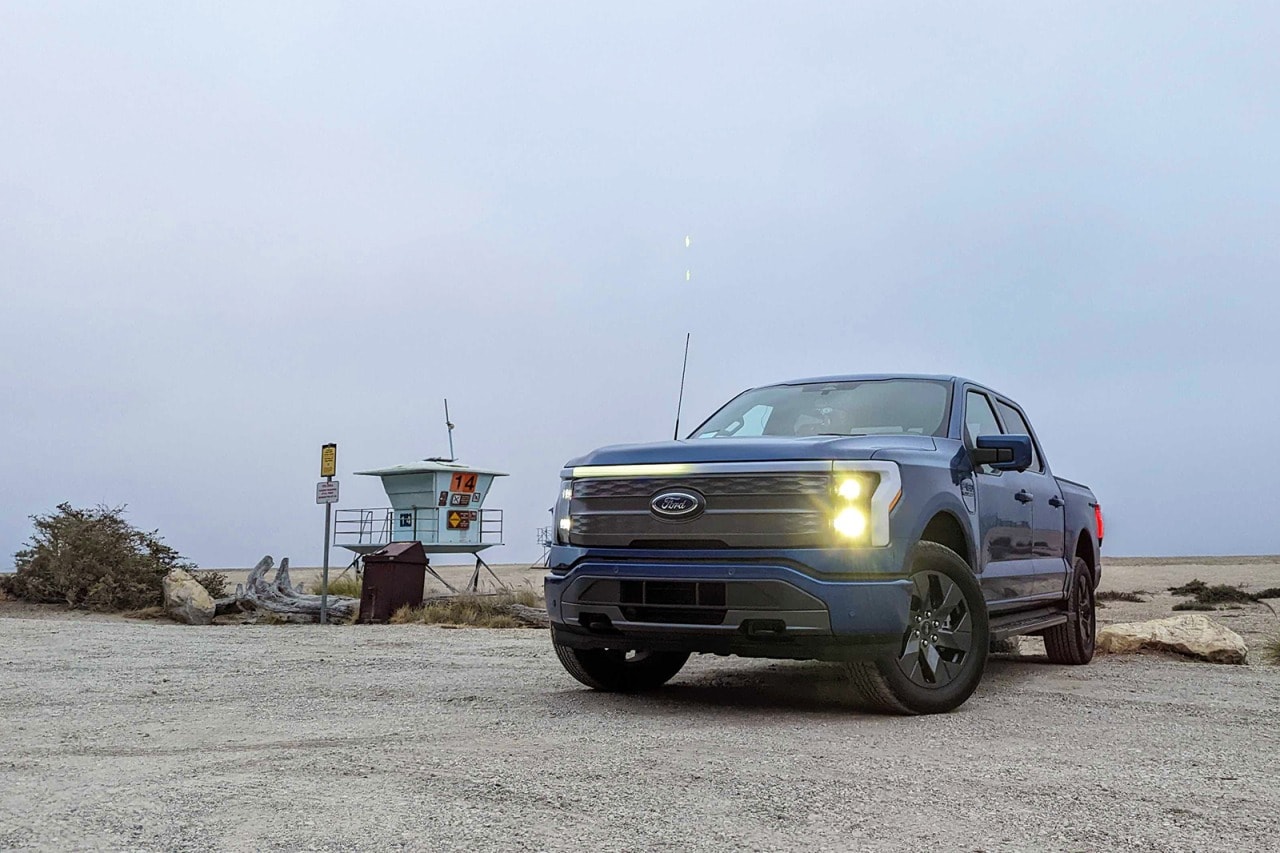
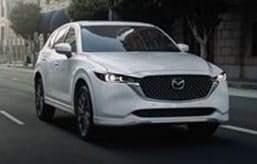
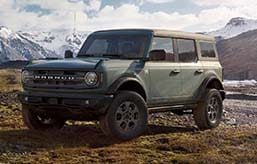
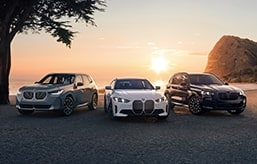
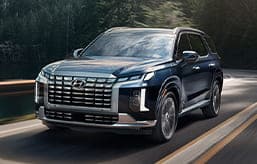










 by
by